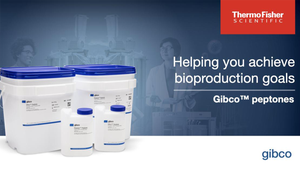- Sponsored Content
Advancing Sterile-Connection Technology for Low-Volume Fluid Transfer
November 19, 2021
Sponsored by Colder Products Company
Biomanufacturers traditionally have relied on laminar-flow hoods or thermal tube welding to establish connections for small-format bioprocesses, including those for cell and gene therapy (CGT) production. But such strategies can introduce processing risks and can pose operational challenges. In October 2021, Troy Ostreng (senior product manager at CPC) described how his company’s MicroCNX sterile connectors could meet biomanufacturers’ needs for low-volume applications.
Ostreng’s Presentation
Welding tubes and forging open connections under laminar hoods raise several disadvantages for small-format bioprocesses. Processing speed is important, yet both strategies add procedural complexity and can take several minutes to perform depending on tubing size and type. Hoods and tube-welding equipment occupy valuable cleanroom space, and operators must be trained to use them. They also incur hidden costs for equipment maintenance, validation, repair, and downtime. Ultimately, both connection methods introduce room for operator error, raising risks for compromising sterility and reliability and diminishing process reproducibility.
Such concerns make sterile-connection technologies attractive solutions. Until now, however, options have been limited for low-volume applications. Late in 2020, CPC surveyed over 50 biologic and CGT manufacturers to learn about what they want from emerging connection technologies for small-scale processes. Respondents expressed a need for connectors that could simplify production steps, decrease risks for contamination, and increase process reproducibility. Users also highlighted the utility of technologies that can connect different grades, types, and sizes of tubing at any bioprocess stage.
CPC released MicroCNX sterile connectors in September 2021 to address such needs. They are designed to bring the safety, efficiency, and simplicity of CPC’s AseptiQuik connectors to low-volume applications. Like their predecessors, MicroCNX connectors are made from polycarbonate and platinum-cured silicone. Thus, they do not introduce new materials of construction into a user’s validation process.
MicroCNX sterile connectors also feature the same pinch–click–pull connection process as the AseptiQuik product line: Users pinch a MicroCNX unit to remove its protective covers, join the connector’s halves, and remove the interceding membrane strips to enable fluid transfer. The simplicity of the process reduces the time and labor required for connection and minimizes risks for operator error. The technology’s genderless design ensures that sterile connections can be made seamlessly across tubing of different sizes and materials. And because MicroCNX connectors withstand gamma irradiation and autoclave sterilization, they accord with trends in current good manufacturing practice (CGMP).
MicroCNX connectors are fully validated to perform in different bioprocess conditions. The connectors have undergone pressure, burst, and tensile testing to ensure their performance at established pressure ratings and to confirm their ability to handle forces exerted during bioprocessing. Ostreng noted that the connectors withstand pressures of
75 psi for 48 hours and 60 psi for longer periods at their upper and lower temperature specifications, and they show no loss in performance after freeze–thaw cycles down to –80 °C. MicroCNX flow-path materials present minimal risk for extractables based on USP class 6 biocompatibility studies and comparator data per BioPhorum Operations Group (BPOG) recommendations. Ingress tests show that flow paths remain sterile after submersion in a contaminated solution, both individually and when connected. Users can be confident about their connectors’ performance throughout the products’ shelf lives.
MicroCNX connectors can be used during all stages of a low-volume bioprocess. They are particularly helpful for work with compact bioreactors, medium bottles, rocker platforms, and seed trains. The products also are easy to validate and incorporate into a library of approved single-use designs. That could help users to develop custom manifolds amid supply-chain uncertainty.
Questions and Answers
How well can MicroCNX connectors join different tubing types and sizes?
The products are truly genderless connectors. For instance, they work interchangeably with tubing sizes of 1/16, 3/32, and 1/8 inches. The connectors also can join thermoplastic- elastomer with silicone tubing.
How can end users access the connector’s extractables report?
Visit https://www.cpcworldwide.com/Products/MicroCNX/MicroCNX. The report lists findings for the product’s polycarbonate and platinum-cured silicone components.
Find the full webinar online at www.bioprocessintl.com/category/webinars.
You May Also Like





